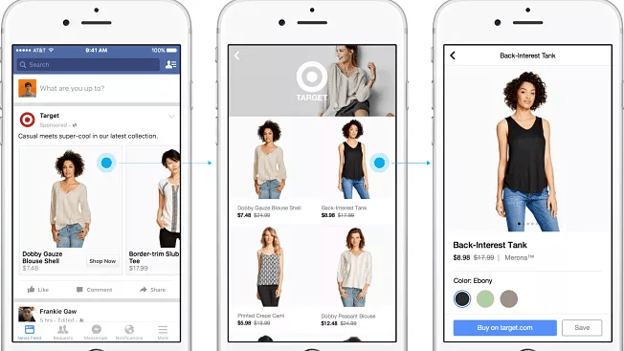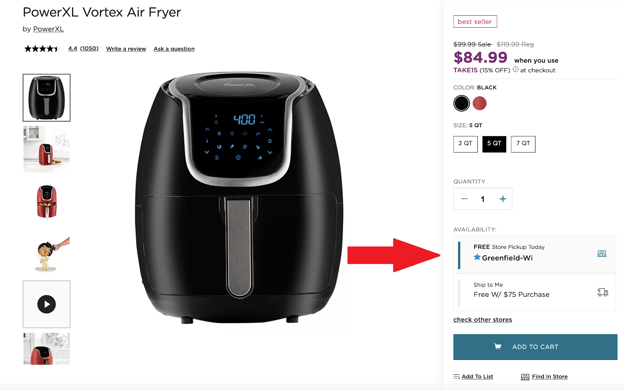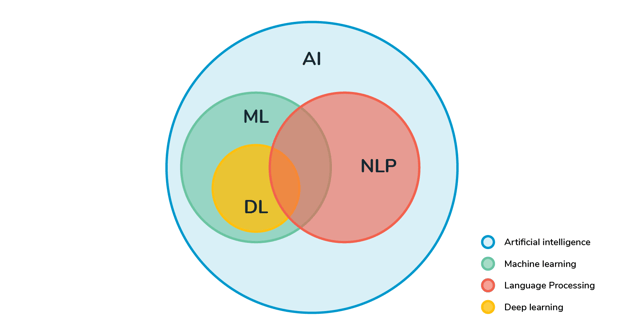Contextual commerce lets customers shop whatever they're doing, and at any time of day, making brands achieve their commerce to content strategies.

Contextual commerce lets customers shop whatever they're doing, and at any time of day, making brands achieve their commerce to content strategies.
$66 jade eggs for gynecological health. Bee venom therapy to eliminate injuries. NASA ‘healing’ stickers from space to stick on your body.
These are products you would probably look at with mild curiosity if anything, right?
You wouldn’t think they contributed to a $250 million business, would you?
Gwyneth Paltrow’s empire Goop started off as a lifestyle brand, slowly entering the eCommerce space. And her success is largely attributed to something called contextual commerce.
Contextual commerce is something that’s been around for a while but is only now beginning to grow in popularity as more and more marketers and business owners become aware of its benefits.
In fact, a lot of online retailers are already practicing it (whether knowingly or not) through their innovative efforts to enhance the shopping experience regardless of where users are and what they're doing.
As part of the push from commerce to content – where retailers are trying to capture attention across different channels through content (rather than just pushing products) – contextual commerce becomes a huge strategic benefit.
Today, I’m going to discuss everything you should know about contextual commerce. Plus, some strategies you can implement to help you stay ahead of the contextual commerce competition in the coming years.
Contextual commerce refers to the potentially game-changing concept that customers can make purchases while doing other things, such as cooking, commuting, hanging out on social media, etc.
In simple terms, it's buying - in context.

It allows merchants to think way beyond the boundaries of traditional storefronts so they can seamlessly implement buying opportunities into the everyday activities of their target market.
For many brands, contextual commerce is the way forward to achieving their customer-centric retailing targets. If customers can shop wherever, whenever, this takes the idea of personalization to a whole new level.
And that’s not the only reason retailers are hopping on this trend.
When done right, contextual commerce will help brands reach customers in their preferred online habitats, and significantly increase their brand awareness.
Businesses can find ways to seamlessly integrate purchase opportunities into the customer’s life throughout the day, in a sort of “life optimization” process.
For the end-customer, the accessibility and availability of brands in their everyday lives make shopping that much easier. Streamlined, efficient, and personalized – demands of the modern-day consumer that are often hard to come by.
So while reinvigorating customer-centricity, contextual commerce also has huge benefits for retailers:
The biggest benefit of contextual commerce is that by eliminating most of the transaction details and prompting a mobile payment that is seamless, it allows customers to interact with the brand anytime, anywhere, and while doing anything.
This is a powerful context for retailers!

Omnichannel shoppers have a 30% higher lifetime value than those shopping on one channel. Imagine how contextual commerce can take this figure one step ahead.
How many times have you watched a movie and thought: I like that watch. Or dress. Or would really want that pizza the family is eating, right now.
Contextual commerce lets you buy what you see and like with immediacy, and in the least clicks possible.
It’s similar to having an omnipresent “Buy Now” button for the convenience of customers.
Moreover, connecting with your customers in their natural setting makes it more likely that you can facilitate higher conversions. Modern users are tired of ads and are easily frustrated by friction-filled shopping experiences.
Placing your brand into the lifestyle of your customers will help them foster loyalty if you can do in a seamless, convenient, and delightful way.
Have you ever used a click-and-collect function, where you place an order online and pick up in-store? Paid for products through your Alexa app?
Many brands are already participating in the contextual commerce future, leveraging the consumer’s context to make product sales.
Here are some more examples of contextual commerce that you may have spotted before:



All of this could've happened in a single day to just one consumer!
And, given the immediacy of each of these interactions, the customer is a lot less likely to rethink any of their purchases, which results in significantly lower digital cart abandonment rates.
With reducing returns on every retailer’s top business priority, leveraging contextual commerce will help provide the right information at the right time, and ensure buyers are left with the perfect product for them.
Now that you've seen the enormity of the opportunities available to brands that are ready to embrace contextual commerce, let’s take a look at the technologies powering this fast-growing trend.

Remember: Contextual commerce is all about providing an omnichannel customer experience.
Which means that it only works effectively if the customer has the same experience regardless of which channel a device they are buying from.
It takes a lot of different technologies to create a seamless experience everywhere, but regardless of which ones you choose, make sure that the buying experience is tailored to each channel.
Here are 7 top technologies to consider when implementing contextual commerce in your own eCommerce marketing. Plus, an explanation of the crucial role each of them plays in providing an omnichannel customer experience.

Movie In Time, wearable tech in a dystopian setting...don't worry, we're still far away from this.
We live in a connected world. The future of retail will be revolutionized by the impressive number of devices currently available in the market.
All your customers need to browse and purchase from anywhere at any time is a smartphone.
But as the internet becomes integrated with more devices we use every day, there are dozens of other opportunities to integrate contextual commerce with IoT.
These include:
Unlike a fridge which doesn’t move, these devices move with the consumer and can be used wherever they are. Making shopping more contextual and triggered no matter what the consumer is doing.
This level of convenience is unprecedented and will likely result in a massive boost in sales for any brand that adopts IoT technology for contextual commerce.
AR and VR are two technologies that seem almost surreal at first glance. But, with the direction the world is moving toward, businesses and brands can’t afford to ignore these channels any longer.
In the past, people only linked AR and VR to things such as autonomous vehicles with built-in VR experiences. But today, things have changed.
With the advent of the coronavirus, shoppers intentionally avoid physical stores which is why a lot of immersive merchants are already experimenting with the use of AR/VR to replicate the in-store shopping experience and gain an edge in the marketplace.
They leverage this technology through the use of things such as:
...and so on.
Furniture brands like IKEA and Wayfair are leading the way with AR-enabled mobile apps. These allow customers to snap photos of their living space and easily overlay true-to-scale models of their chosen furniture in order to see how it would look in the room.

By using AR and VR in this way, you too can provide your customers with a more contextual experience through the use of image recognition technology.
Voice-enabled search has a lot of benefits for the retail industry. In voice recognition technology, machines use automatic speech recognition (ASR) together with natural language understanding (NLU) to convert speech to text so they can quickly process the meaning behind the captured phrases.
As online commerce gains momentum, so does the increase in the use of this technology in contextual commerce. In order for voice-enabled search to be successful, conversational language needs to be used in marketing your products to customers.
After all, speed is king.
And, in the online buying process, and what's faster and more convenient than being able to simply say what you want and instantaneously have it?
And with 24% of adults in the U.S owning a smart speaker, it’s becoming increasingly clear that brands that are able to provide that kind of service to their customers will own the market.
The many devices used in contextual commerce are all over our homes, workplaces, social hangouts, etc. We have them in our purses and pockets, and keep them attached to our wrists at all times.
All day long they collect data on user behavior which is then analyzed by retailers and fed back to the devices to provide a more personalized customer journey.
This is where AI becomes crucial to contextual commerce.
It's the power behind data analytics for creating personalized customer experiences. For instance, retailers can layer in AI and predictive technology so they can know things about their customers that allow them to anticipate their needs for products and services.
Dynamic Messaging, which also leverages machine learning algorithms, shows the shoppers the right product messages to encourage their purchase behavior.
Now imagine they’re shown the same messages when purchasing in-stores, or from their mobiles.
The more seamlessly you can integrate your AI capabilities, the better your communication, and the more tailored your product messaging can become across multiple touchpoints.
For the most part, computers don't understand how humans naturally communicate.
While we may communicate remotely using webinar software to speak to each other, computers speak in code, which involves endless lines of ones and zeros.
Humans, on the other hand, have more complicated and colorful speech that uses things like sarcasm and phraseology.
NLP is an AI-based solution designed to help computers better understand and interpret human language.
In other words, it helps machines and algorithms gain a better understanding of the types of things people say or write conversationally.

This technology has an important role to play in contextual commerce because it helps to match consumer intent with content, products, or services on websites.
NLP helps contextual commerce in the following ways:
Here’s a great example of NLP in use:
Consumers have millions of different ways of phrasing their requests when searching for products or services online. However, retailers only have limited ways to describe their products or services on their websites.
NLP helps to decipher consumer intent so they can match customers with the exact products they're looking for.
By now, many companies understand that AI is here to stay, and it's something that they cannot ignore any longer.
A lot of businesses are taking advantage of this technology by using innovations based on techniques from machine learning (a subfield of AI) to develop autonomous learning algorithms with the following applications in eCommerce:
Machine learning can help in a wide range of ways, including:
These applications are just a few of the many things machine learning can achieve with regard to contextual commerce in 2022 and in the coming years.
Other applications include customer segmentation, churn prediction, product categorization, sentiment analysis, inventory forecast, anticipatory shipping, and much, much more.
Crobox, for example, leverages machine learning to optimize product messages and recommendations. They use the customer’s context and their product engagement data to serve relevant messages in an autonomous and scalable way.
Each one of the technologies outlined above relies on having fast connection speeds, which is why 5G is crucial to contextual commerce.
It makes it possible for consumers to quickly and easily make purchases on the go using a wide range of devices, including mobile apps, smart devices, POS devices, digital wallets, RFID, NFC, virtual reality, augmented reality, Internet of Things, etc.

5G will help to make contextual commerce even more useful and practical for businesses in the coming years, which makes it a necessity for merchants who want to optimize for the smoothest possible shopping experience.
With lightning-fast speeds up to 100 times faster than 4G, 5G is set to revolutionize the online retail experience by satisfying the modern shopper's need for instant gratification. This, in turn, will boost conversion rates and drive more sales for retailers.
Contextual marketing is a game-changer, but if people don’t know about your products, they are less likely to make a contextual purchase. It’s important to integrate contextual commerce effectively into already existing channel management strategies.
For example, a jogger may see a billboard advertising a new restaurant, which may trigger the jogger to tell their smartwatch to call the restaurant to make a reservation.
In days past, the marketer would hope the jogger would see the ad, go home, and then make a reservation or perhaps drive to the restaurant.
In other words, the ad drove actions in the future — which meant that they would have to be remembered long after they were first seen. Further, they’d have to be so memorable as to drive action at some future time and date.
With contextual commerce, marketers don’t have to worry about their ads generating a purchase sometime after it's seen but when it's seen. The jogger now sees the ad and acts immediately.
They don’t wait.
One of the most important elements of contextual marketing is triggering the consumer to make a contextual purchase.
Sometimes those triggers are as obvious as a relevant ad at the right time. But sometimes a social media message or an automated email sent from one of the best email marketing services seen in the morning plants a seed that leads to a contextual purchase in the afternoon
If Goop’s trajectory wasn’t enough of a sign – there are obvious trends in online retail that are making it clear why contextual commerce is now more important than ever before.
And (as you’ve seen), there are some major technologies, tools, and software powering contextual commerce that you should start paying attention to.
There are also things like in-app purchases, shoppable social media posts, messaging app purchases, and much more to consider.
The bottom line is that technology has transformed the retail landscape forever.
Its effect is even more profound now that the coronavirus has supercharged all things virtual. Consumers have had to rethink their shopping habits and this has led to retailers experiencing record online sales.
Even with the end of the global pandemic insight, contextual commerce is set to continue rising in popularity. That's why it's important to make sure you get your business ready now and adopt these technologies so you have a competitive edge in 2022 and the next five years.
So, which of the technologies outlined above do you plan to implement in your business? Share your thoughts in the comments below!

This post was written by Professor Ron Stefanski, who is the owner of OneHourProfessor.com, a website with 100,000+ readers monthly that helps people create and market their own online business. In addition to this, he runs his own website portfolio that accounts for millions of visitors every year.